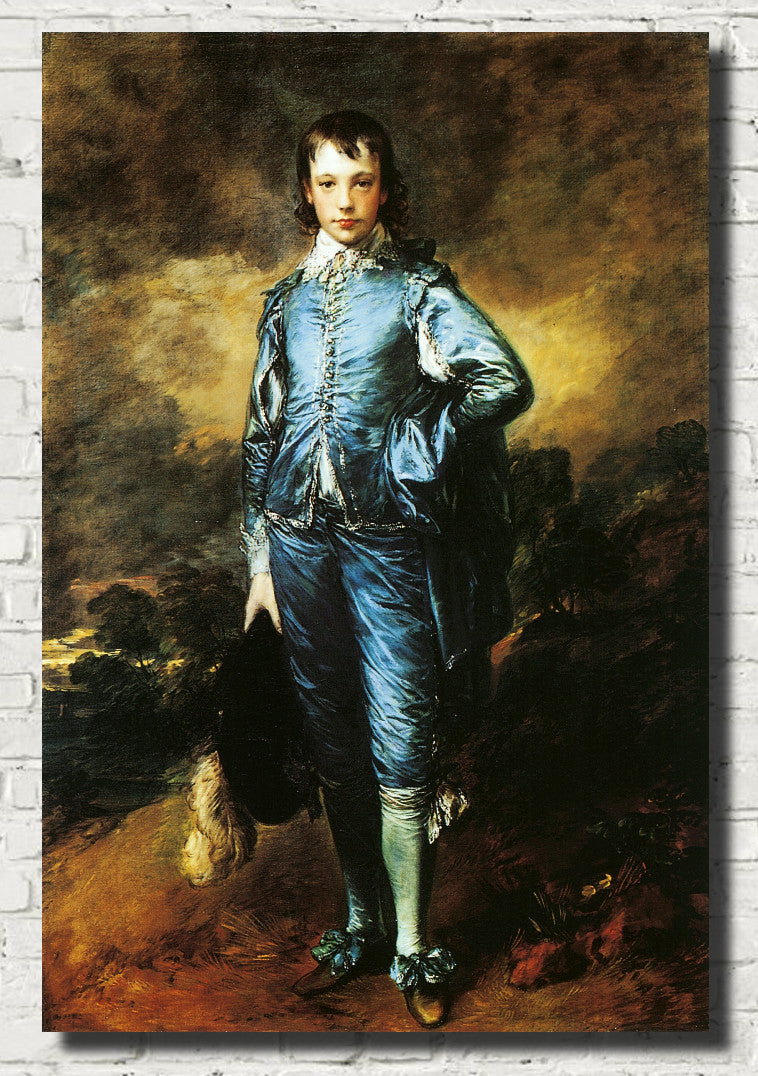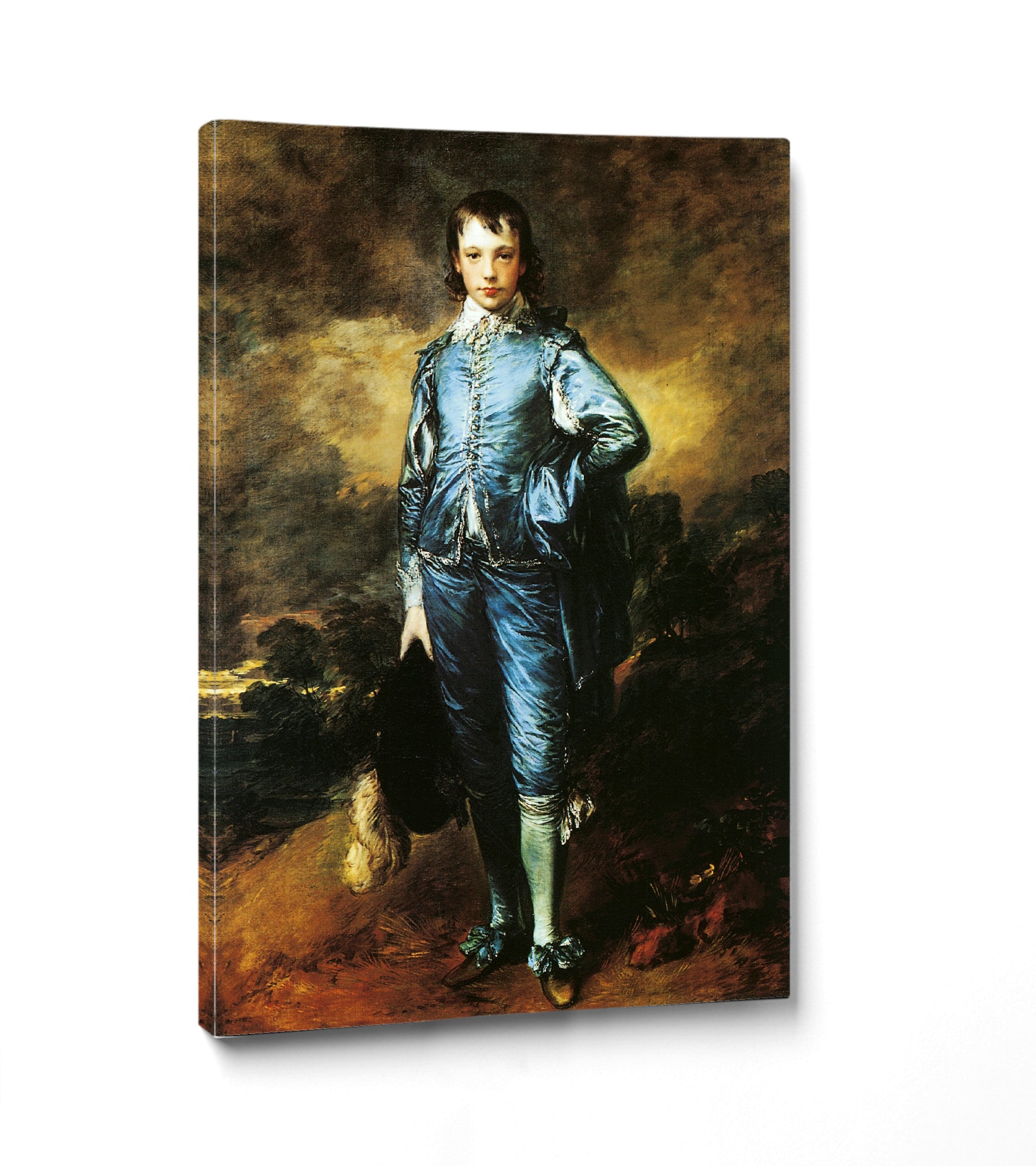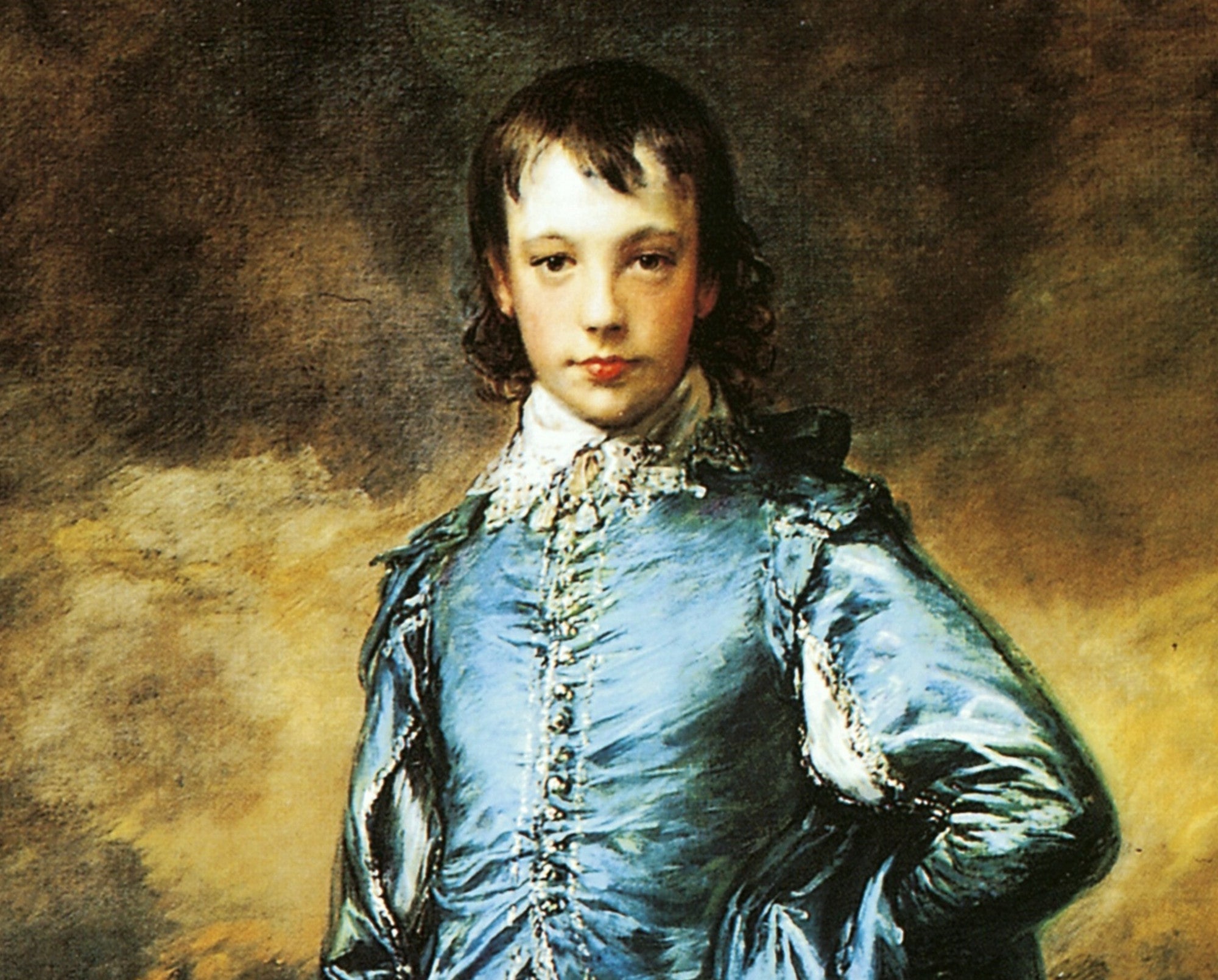The Blue Boy, Thomas Gainsborough
Couldn't load pickup availability
Dressing up in and being portrayed in ‘Vandyke’ masquerade was commonplace in Gainsborough’s Britain – a few examples of such fancy-dress costumes, in satin, braid and sequins, survive – but with The Blue Boy the artist is also performing a painterly masquerade and making a statement about his relationship to the art of the past, and about his modernity. As well as pose and gesture, Gainsborough invokes the colourism and radiance, the sense of speed and vigour in the brushwork and the eloquent drapery of the Anglo-Flemish painter, whom he considered the supreme exponent of British portraiture and against whose measure he asks The Blue Boy to be judged. The historical clothing is transposed into something akin to the late 18th-century English suit, which follows the form of the body, allowing easy movement and suggesting honesty and comfort; in Van Dyck’s satins, by contrast, pockets of air, integral to the way the fabric is woven, amplify the expressive movement of the drapery around and away from the body. As well as encouraging comparisons with Van Dyck (and Titian and Rubens), Gainsborough draws upon more recent French innovations in art; he calls to mind the belief of the painter and critic Roger de Piles that the spectator is affected not by what is represented but by the manner of the representation.


All prints are made using archival art stocks and UV pigment inks to give up to 200 years life. Prints are sold unframed and unmounted.
All orders for unframed fine art prints and original paintings are dispatched within 2 working days of receipt of payment.
Orders for custom framed prints are dispatched within 4 working days.
All orders are fully tracked from dispatch to delivery at your home or business.
All print and original painting orders are fully insured against loss or damage in transit. We refund or replace any damaged or lost orders.
Buy with confidence - read what our satisfied customers have to say - Reviews
Fine art papers are printed without any additional white border Please let us know at the time of ordering if you would like a small additional white border.
Rolled canvas options have an additional white border of approximately 2.5 inches (7cm) on all 4 sides to aid stretching.
Ready to hang canvas panels are stretched on 1.5 inch deep solid pine frames from sustainable forestry sources. The image is mirrored on all 4 sides to give an aesthetically pleasing finish.
Why not have us gift wrap your order and attach a personalised message to the recipient. Available for all orders. Each order is hand wrapped in high quality gift wrap with meatllic ribbon and bow. Your personalised message is printed on a card which is included with your order.
Have your hand wrapped gift delivered directly to the recipient.
Full tracking and insurance included with every order.
Please note design may vary depending upon availability
Just purchase the gift wrap option HERE
Why Choose GalleryThane?
- Printed and framed in-house
- Free UK delivery
- Free EU an USA delivery on orders over £200
- Tracking and insurance included in every order
- Fast 1-3 day dispatch
- Gift wrapping service available
- Gallery quality materials
- Sustainable, eco-friendly packaging
- Great customer support
What makes our Prints and Canvas Panels so special

Latest Giclee Printing Technology
We have invested in the latest wide format print technology to produce museum quality giclee prints utilising the highest quality pigment inks to give outstanding colour reproduction.

Museum Quality Archival Fine Art Papers
We print on the finest quality fine art papers with textured, smooth and lustre finishes for prints which last a lifetime.
From aceo miniatures to 40x80 inch large format, every print has our lifetime quality guaranteee.

Solid Wood Frames, Cotton Canvas
All of the wood for our canvas panels and frames is responsibly sourced from manages forests. Our cotton canvas is completely seedless for the highest quality reproduction possible.
















